

We live in a world where the answers to almost all of our questions lie no further than the tips of our fingers.
How amazing is that?
By simply picking up our smartphone or sitting down at a computer, we can ask just about any question and instantly receive an answer. And few people have more to gain from instant access to information than us as parents.
We ask things like, “How do I sleep train my baby? Should my child go to public school or private? How much screen time should my kids be getting?”
And why wouldn’t we? When caring for lives other than our own, we do our research! We take classes (like our FREE WEBINAR!), read books, and yes, search the internet. Because when it comes to raising our kids, we want to be well informed.
Some parents look for advice on how to deal with toddler tantrums while others may be curious how they can help their children study better.
But there are a select few who may find their Google searches going a bit further and digging a little deeper into new territory that is, quite frankly, rather uncomfortable.
It’s a place no one wants to go, and certainly doesn’t plan to, but a reality nonetheless. I’m talking about those parents contemplating divorce. Of course, with children involved they are now stuck wondering, “How are we going to break the news to our kids?”
If you and your spouse are considering divorce, I can assume that your children are your number one priority. Maybe you’re curious how this will affect them and wondering what life looks like parenting separately?
While divorce is never an easy topic for any couple to discuss, it’s important to remember that children thrive on certainty, knowing where they stand with their family, and the assurance that they are safe and well cared for.
In order to break the news as gently, yet effectively as possible, follow these 5 tips when the time comes to talk with your kids about divorce.
Tip #1: Prepare in Advance
Divorce is nothing to take lightly. And when it comes to telling your kids the news? You MUST do the prep work! It’s absolutely essential that both you and your soon-to-be ex are on the same page before you even think about telling your kids.
So what can you do? Come up with a game plan!
First of all, know your ultimate priority: To ensure your children know they are still loved and will continue to be cared for. The relationship between you and your spouse is ending, NOT the relationship each of you have with your kids.
Then, anticipate what questions they may ask and be prepared to answer them. Remember, you may see the big picture and can understand why divorce is the best option, but your children may have a more difficult time understanding.
They can only see what’s in front of them, and if you aren’t on solid ground, they’ll feel it! They need to know that they’ll be taken care of and it’s your responsibility as their parents to make sure they have that assurance.
Finally, decide not only when you are going to tell them about the divorce but how you are going to bring it up. Your teen is going to take the news differently than your toddler, so it’s important to understand how to talk to them based on their age.
Preschool (Ages 2-5)
It’s easy to assume that children this young will be least affected by the news of divorce. After all, will they even remember it?
But preschool-aged children rely on their parents for absolutely everything–food, shelter, love, and stability!
Not only will the news of divorce rock them in a significant way, they’re also at an incredibly self-focused age where they may perceive the separation to be their fault. It’s easy for them to make the leap from mom left dad to mom left me.
You’ll want to remind them of their own significance and offer plenty of reassurance. They will always be loved and cared for–by both of their parents.
Living apart means you may also want to support a two-home concept. Nix the idea of “our house” and “dad’s house”. Your child will benefit most by seeing both houses as home because that’s exactly what they are–his home!
Finally, be prepared to answer a lot of questions over time. Divorce is a really hard concept for little minds to grasp, so it’s important to be patient and help them understand in their own time and way.
Younger Kids (Ages 5-9)
By this age your children may be more in tune with processing bigger emotions, but the concept of divorce can still be hard for them to fully understand.
Again, they may fall into the trap of blaming themselves for mom and dad separating. They may wonder, Did dad move out because I misbehaved? Did mom leave because she’s mad at me?
Be ready to discuss how the news makes them feel. Are they sad? Anxious? Angry?
You’ll need to talk them through what’s on their mind then come up with concrete ideas on how you can help them manage those feelings.
Older Kids (Ages 10 and up)
Older kids have the benefit of a greater understanding of divorce, but it can also feel as though they have the most to lose.
After all, they’ve spent an entire lifetime under one roof and now that’s all about to change.
They may also worry about the important relationships they’ve established. Not only how will their relationship with mom and dad change, but what about their friends, relatives, and teachers?
As much as you want the divorce to only be about you and your spouse, the reality of the situation is many people may feel the ripple effect.
Because of their age, you can get more specific. Give them a clear explanation of what it means to divorce and talk openly about how custody works.
Of course, with greater detail may come more in-depth questions. Be ready to give them truthful answers.
As always, never forget to mention that their relationship with you will not change. No matter how old they are, it doesn’t hurt to remind them that divorce is an adult concept–parents don’t divorce their kids.
Tip #2: Break the News Together (And to Everyone!)
When kids are involved, divorce is a family matter. Plain and simple. And when it comes to breaking the news that mom and dad are splitting up, you need to do it together–with everyone–if possible!
Now, I know it may be tempting to pull your oldest aside and give him the news before his younger siblings–after all, he’s so mature for his age! But I promise you this will only do more harm than good. You’d just be giving him a heavy burden he has no business bearing.
When the time comes, gather everyone together and tell them at the same time. Make sure you pick a time of day that isn’t rushed.
The last thing you want to do is drop this bomb on your kids and then rush them off to soccer practice. They’ll need plenty of time to digest the information, ask questions, and grieve the sudden loss of the family as they’ve always known it.
Then, start gently.
You may try, “Before we tell you our news, we want to remind you how much we love and care for you. We are, and always will be, a family. It will just look a little different.”
Lay out what life for them will start to look like. Will they spend weekends with dad and weekdays with mom? Will mom be moving into a new house while dad stays in this one?
Of course, try not to overload them with too much information. Give them the high-level details they need to know and then allow them to ask questions about the rest later–on their own time and in their own way.
Remember, this is going to be a profoundly significant moment in your children’s lives. Not only will having the whole family together for support be instrumental in how they take the news, but this will also be the first of many instances over the years to come that the two of you should come together for the sake of your children.
Remember, just because you aren’t the best as romantic partners, doesn’t mean you cannot still be wonderful parents…together!
Pro Tip: Parenting apart doesn’t have to be a hassle! Positive Parenting Solutions Members can check out my Battle-Tested Blueprint: Divorce & Parenting Apart for more surefire tips and tricks on how to be the best co-parent you can be.
Tip #3: Put Your Hurts Aside
As is often the case with divorce, emotional hurt may be running deep.
Perhaps you’re dealing with the aftermath of an affair or a sudden loss of trust. Whatever the case may be, when such extreme pain exists between you and your spouse, it can be hard to look at them, let alone speak to them. Still, now is not the time to play the blame game–especially in front of the kids.
When it comes to breaking the news about your divorce, your kids don’t just want you to be mature, they need you to.
Here are a few things you definitely DON’T want to do:
DON’T use this time to pick a fight. You’ll want to be as calm and level headed as possible when you let them know. They’re going to be hurt, angry, and scared. Seeing their parents fight would only add to the problem.
Pro Tip: I understand that for many couples going through the process of divorce, being civil toward one another can feel like an unthinkable task. Should you find it impossible to keep the peace in person, you may consider trying a free app–such as coParenter or Truece–designed to help structure communication for co-parents.
DON’T pit your children against the other parent. There are, arguably, no two people in the entire world your child loves more than you and your spouse. While your feelings for your soon-to-be ex may be down in the gutter, your child’s aren’t.
And that’s the way it should stay, because there’s nothing more unfair to a child who is just learning that his parents are about to divorce than being forced to choose between the two.
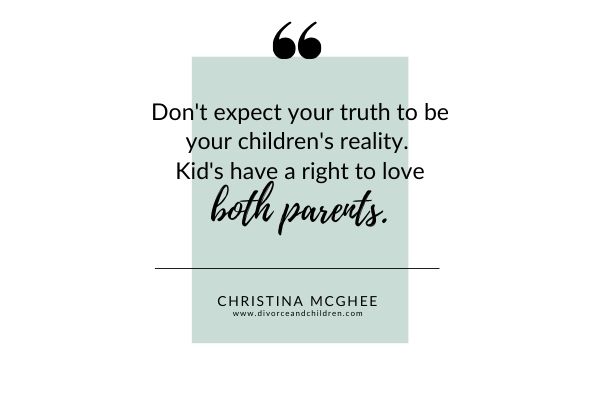
And finally, DON’T blame the other parent for your marriage coming to an end.
If you’re going through a particularly troublesome separation, I understand that this can seem nearly impossible. You’re hurt, angry, and quite frankly, you do blame them for the marriage coming to an end! But this is not the time to bring it up.
Right now, who’s at fault for the demise of the marriage is of absolutely no importance. What is important? Your children.
Leave the blame behind.
Tip #4: Remind Them of the Constants
When it comes to divorce, the only certainty is uncertainty–especially for kids.
They may be wondering, “Will I live with mom or dad? What school will I go to? Did I cause this?”
In the midst of all the wonder and chaos, don’t forget to remind them of the constants–the things that won’t be changing.
Again, divorce doesn’t apply to children. Reassure them of everything that will stay the same. Will mom still be there to tuck them in at night? Will dad still make all of the baseball games? Lay those certainties out and really emphasize their importance to you.
You may say, “We understand that this can be a scary time, but we promise that our love for you is constant. Nothing you say or do can change that.”
Give them your word…then stick to it.
Tip #5: Promise to Walk the Walk (Then Do It!)
So you’ve broken the news and made the ultimate promise–to love your kids the same as before, guaranteeing you’re still their parent, now and forever. But what happens after the talk is over?
Keep that promise! Now’s the time you walk the walk, making a point to actively show your kids you meant every single word.
Want to ensure they continue to feel loved and cared for? Then say I love you and say it often. You can never remind them enough. Give them a hug, a high-five, a pat on the back. Spend quality time together, even though you may have less of it.
Now that your time with them is divided, you’ll want to make the most of every minute you have with them. What a wonderful chance to engage in regular Mind, Body, and Soul Time each day you are together (you can even double up if you want!).
Helpful Hint: Your time with your kids is important, but don’t be a strict time monger! Try to be flexible with your ex when it comes to sharing time with the kids. Positive Parenting Solutions Members, be sure to check out Christina McGhee’s helpful tips on how to divide time fairly in the Battle-Tested Blueprint: Divorce & Parenting Apart.
Want to know another great way to show you care? Take your house and make it a home!
The walls may change but your routines can stay the same. Eat dinner as a family, host family game nights, decorate the kids’ rooms–whatever you did before the divorce, keep it up.
You may be down a parent, but your kids will appreciate the effort you take to ensure their comfort while staying with you.
Final Thoughts
Oh sweet friend, from the bottom of my heart, let me just say how sorry I am that you are having to face such a difficult task.
Breaking any bad news to our children is difficult enough, but the news of mom and dad splitting up is especially hard–for both them and you!
As always, we are here to support you on your parenting journey–single or together–so please don’t hesitate to reach out if we can help!




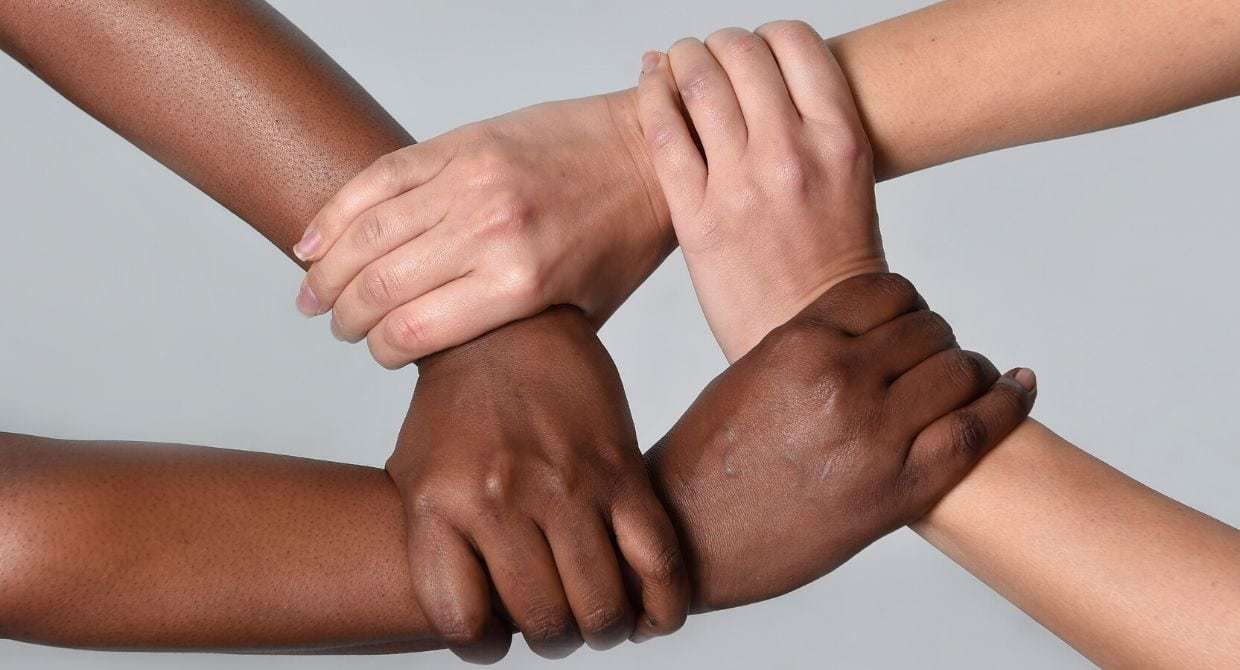



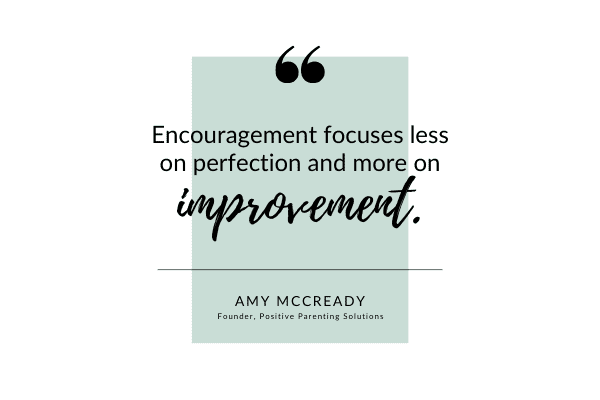




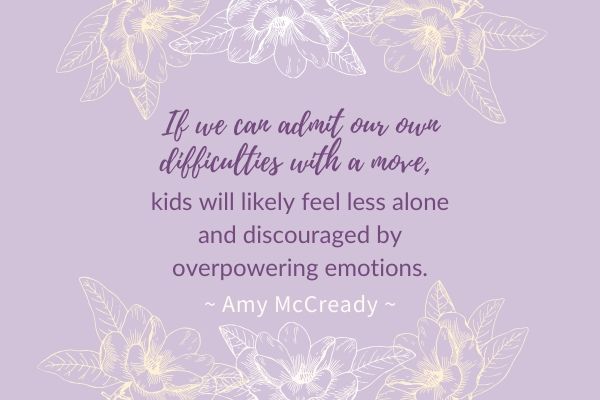


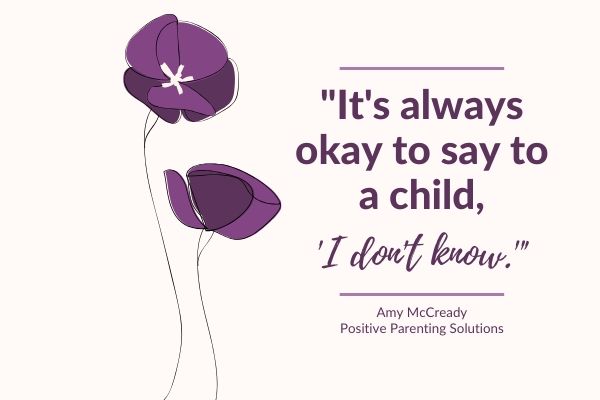

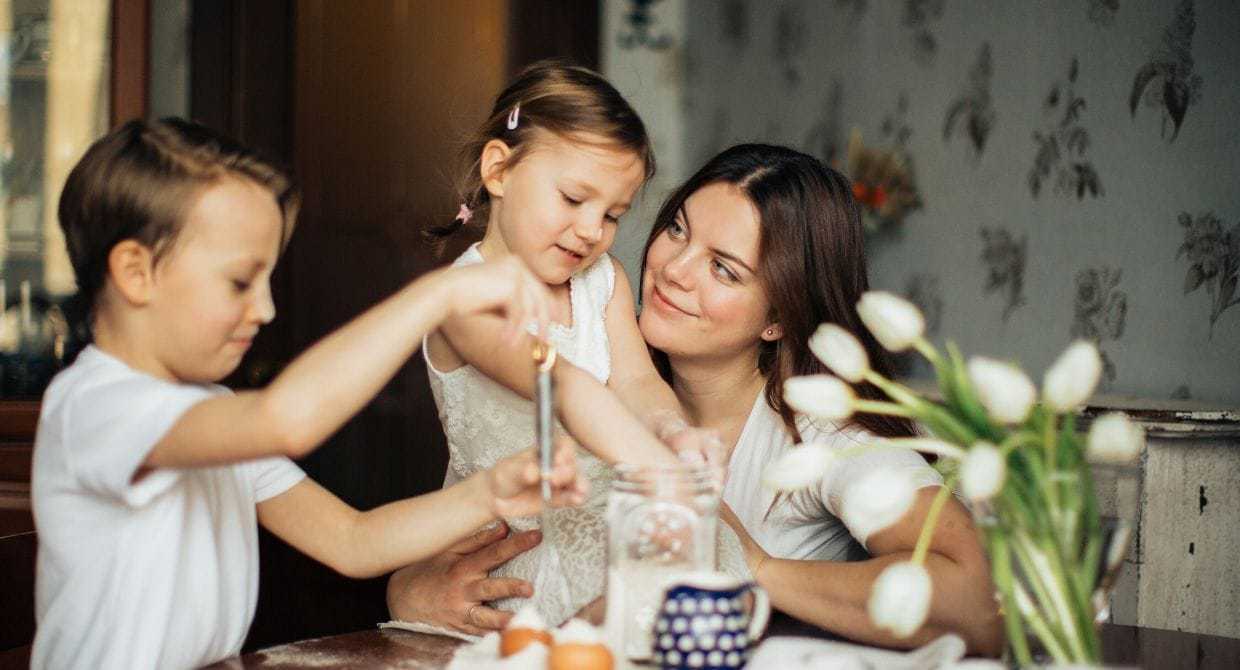

 Rachel Macy Stafford is a New York Times bestselling author and founder of
Rachel Macy Stafford is a New York Times bestselling author and founder of 


